
LATERALITY: CMB that translates the integrated perception of the 2 sides of the body. Fundamental element of relationship-orientation with the outside world. Spatial notions with top-down, anterior and posterior depend on the notion of laterality.
DIRECTIONALITY: Ability to transfer laterality to the left-right notions of objects in space. It mainly depends on visual control.
THE laterality and the directionality are closely related to spatial structuring.
The spatial notion refers to the knowledge of the body's external space, being close to the notion of directionality (left and right, inside and outside, above and below,…). Laterality, on the other hand, refers to a relationship of dominance of the Cerebral Hemispheres that determines the predominance of one side of the body over the other, referring to the individual's internal space.
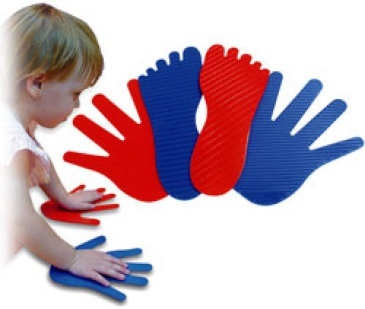
It is around 6 to 8 years of age that laterality manifests itself. It is not yet known for sure what causes this phenomenon, but some researchers believe that it is genetic in nature. Thus, studies show that right-handed parents will only have left-handed children in 9.5% of cases. Left-handed parents have a high probability of having left-handed children – if both use the left side, the child will have a 26% chance of also having the predominance of this part of the body.
In the beginning, before the definition of laterality, the child expresses a preference for one of the hands in their activities. This phenomenon is driven by the brain. In this process the opposite sides of the body command each other – the left stimulates the right and vice versa. When the left part predominates, the person is right-handed; otherwise, she is left-handed. This also concerns the eyes, the feet, certain pairs of organs. Left-handers have suffered a lot, since they were considered abnormal, especially at school, where they were severely punished, with their left arms tied by teachers.
Today, experts say that they should not be coerced and punished, as this attitude can cause serious harm to the child, since their movements are directly linked to the brain area. She can have serious problems with learning and spatial orientation if she is forced to use the right side of her body.
Laterality disorders cause changes in spatial structure and, consequently, in reading/writing. Examples of this are contradicted laterality, crossed laterality and ambidextrous.
The contradicted Laterality represents the one who has his dominant left side, but who, due to social influences, starts to write with a false right-handed dominance. Writing with the left hand in itself is not a nuisance, but imposing on the child the non-dominant laterality for him results in inconvenience.
Ambidextricism is when the child uses the two sides of his body interchangeably to accomplish things; it also causes serious disturbances to the child, especially in relation to learning.
Crossed laterality is when the predominant left hand is presented, while the right leg is the one that stands out; or in the case of having the use of the right hand and the left eye. These children then need to undergo a process of organization of their psychomotricity, that is, of muscle self-control - written, visual and motor activities - to tune into these predilections and avoid future learning and awareness problems space.
If as a child there is no effective work in their laterality and spatial notion, when they reach adulthood, these disorders will persist and are often demonstrated in daily life, such as:
– Difficulty in finding direction (confusion of left and right, inside and outside, up and down);
– Difficulty in internalizing yourself (does not realize the real proportions of your body);
– Difficulty in making mental representations (imagination);
– Difficulty in perceiving the space that surrounds it (people start to be labeled “smug” because they bump into things, knock them over, cause accidents, etc.);
– Difficulty in reading/writing (they don't write and don't read correctly);
– Difficulty of organization (of time and environment).
Laterality and spatial awareness exercises help the child to deal with these difficulties and these exercises can be found both in a course in body expression (dance, theater, rhythmic physical activity), as well as in specialists in the areas of psychotherapy, psychopedagogy and psychomotricity.
Some suggestions for Lesson Plans on Directionality and Laterality by teacher Glaucilene Silva Brasil de Souza from Escola Bom Jesus de Praga
Theme: Directionality and Laterality
Time: 1h
Location: Free Area
Features: hula hoop and ball
Objective:
– Develop right and left skills as well as mastery of space in relation to your own body or what is around you.
INITIAL Part 1
Activity 1: Standing Stretch:
Stretch your hands on top of your head Put one hand on your head another on your belly Now both hands on your knees One hand on the breast and the other on your nose Hands behind the back One behind the back another on the belly Right hand touches hair Left hand touches navel claps palms behind back (no can clap back, but clap both hands on the back) The right hand touches the left knee (here it's more difficult, hits the hand, but the knee part is hesitant… it's not exactly easy either :)) and vice versa Right hand touches right foot and left hand touches foot left ETC…
Lying down:
Raises both legs in the air Now raises left lower right Hands stretched above head and Clap hands with straight arms
Activity 2: Pass Ball
Formation: in circle and seated
Development: The teacher starts the activity by giving the ball to whoever is on his right, who has to move to the next one, and so on until the teacher gives the left or right command. The student who has the ball will give it to the child on the right or left according to what the teacher says.
Activity 3: pass bow
Formation: Two semicircles, students holding hands, the first student on the right with a bow.
Development: At the signal, the first of each semicircle must pass the bow to the next without releasing the hands. The bow should reach the hand of the last student in the semicircle. The teacher will be able to give right and left commands.
Activity 4: Right and left
Formation: Draw a line on the floor, one side to the right and the other to the left, place students in a row on the right side.
Development: The teacher will speak on one side, the said side must be occupied, for this the students must jump to it. The student who jumps to the wrong side exits the activity.
Activity 5: Right and left
Formation: in circle and seated
Development: Teacher with his back to the class gives orders that everyone must follow:
* raise the left arm… now the right one;
* lower the left arm… now the right one;
* all standing with their left leg… take 3 little jumps;
* now with the right leg… 4 jumps forward;
* soon after the students run without a model;
* Note: the teacher creates other orders – execute sitting, standing, eyes closed, etc.
3rd Part BACK TO CALM
Activity 6: relaxing story
Formation: Each one should feel comfortable, loosen their muscles, as if they were going to sleep. Advise the children to look for a quiet place on the floor and lie down comfortably, on their backs. They should close their eyes, loosen their legs and arms, leaving the body very loose.
Development: The teacher will then begin to enter the story. Let's all imagine that we are getting on a big bus, to go for a walk in a park. Inside the bus are all our friends and classmates, dressed in colorful and cheerful clothes, appropriate for the tour. The bus will leave, everyone is already present: "Look" through the window, "see" how it has beautiful trees, how many birds. The sky is very blue, the sun is warming your body. Now imagine that we are coming. The bus stopped, let's go down slowly and don't forget the bag with the lunch. Keep your eyes closed and think that we are now walking through the woods where there are trees, flowers, a very beautiful little river, with very clean water, with little fish swimming in them, "look" how many birds… People get to hear their singing.
GOALS:
– Locate objects and people around me in space;
– Develop the first notions of spatial reference (laterality).
2 – Survey of hypotheses: If you are facing a friend, will his right hand be on the same side as yours?
HYPOTHESES:
I think so: (number of students)
I don't think so: (number of students)
3 – Experimentation
In pairs, one student facing the other, perform coordinated movements according to the teacher's commands:
– Give your right hand;
– Raise your left arm;
– Touch your partner's left foot with your right hand;
– Jump with your left foot;
– With your left hand, touch your partner's left foot;
This experimentation can also be repeated with one student in front of the other, or even next to the other.
Students can circle in each group and the teacher can guide:
– place your right hand on the colleague on your left;
– put your left foot one step forward, etc.
Explore (left, right) and also (front, back) (top, bottom).
4 – Discussion.
Question the groups where there were more errors: in the notion (top, bottom); (front, back) or (left-right) ?
How does each one know which is your right foot and which is your left foot?
5 – Registration
After the discussion in the groups, each student produces a text, or a drawing about what they did, what happened, what they learned and what difficulties they encountered. Don't forget to close the activity with a collective record of the whole class.
Did you like it? Share this post on your social network
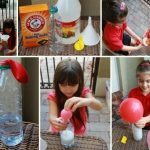 HOW TO WORK THE MOTOR COORDINATION
HOW TO WORK THE MOTOR COORDINATION
 CORNER OF TEACHING SEQUENCES + CLASS PLAN
CORNER OF TEACHING SEQUENCES + CLASS PLAN
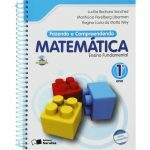 4 Mathematics Book for Elementary School in PDF – Download
4 Mathematics Book for Elementary School in PDF – Download
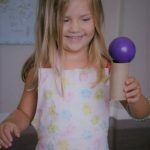 MOTOR COORDINATION ACTIVITIES
MOTOR COORDINATION ACTIVITIES
 PSYCHOMOTOR ACTIVITIES FOR EARLY CHILDHOOD EDUCATION
PSYCHOMOTOR ACTIVITIES FOR EARLY CHILDHOOD EDUCATION
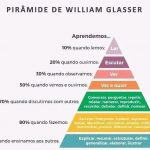 William Glasser's Pyramid of Learning
William Glasser's Pyramid of Learning
This site uses Akismet to reduce spam. Learn how your comment data is processed.


